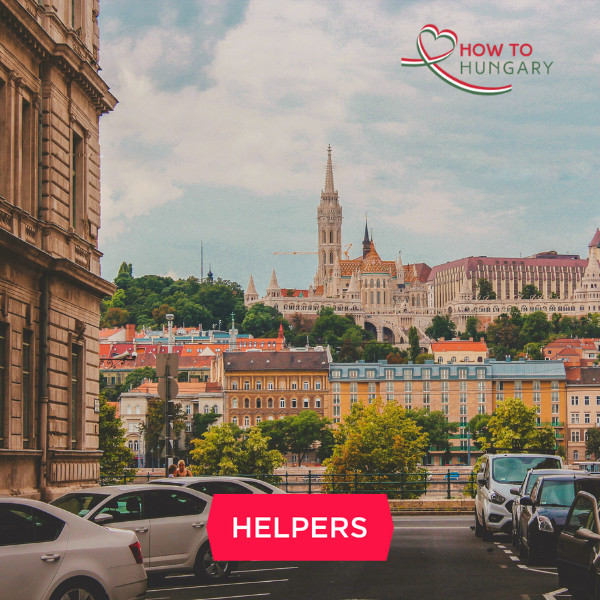Hungarian citizenship process: making it official

Roots and identity
Growing up in Canada, I never doubted I was Hungarian. My parents made sure of that – Hungarian food on Sundays, family stories that circled back to Budapest, and a name that no one at school could ever pronounce. But identity and paperwork turned out to be two very different things. In the 1980s, the idea of moving back to Hungary felt like a dream, something my relatives spoke about only in whispers. Visits were possible, but a real return? That was unthinkable…
In Canada, being the daughter of immigrants came with a label – Hungarian Canadian. Everyone seemed to wear their heritage like a badge, whether it was Irish, Italian, or Ukrainian. But what I actually knew about Hungary was patchy: recipes, family stories, and the occasional summer trip. There was pride, yes, but also a disconnect. When I was four, I visited Hungary for the first time, a whirlwind of relatives and strange new words. Later trips gave me snapshots of Lake Balaton, Christmas markets, and long afternoons at family tables – but these were glimpses, not lived experience.
The world opens up
When the Berlin Wall fell, everything changed. Suddenly, Hungary was no longer just family stories or childhood visits, it became a place my family could return to. In my twenties, I visited more often, this time with grown‑up eyes. I connected with cousins I barely knew and explored Budapest not as a wide‑eyed child but as a young adult, noticing its contradictions: ruin bars beside centuries‑old churches, tech start‑ups in buildings that still bore communist‑era scars.
My father encouraged me to apply for citizenship, especially once Hungary joined the EU. He saw the practical advantages immediately – travel, study, work opportunities. For him, it was obvious. For me, it felt like a distant project. Like many young people, I wasn’t ready to face a mountain of paperwork. I brushed it off, thinking I could always do it later.
First attempts (and missteps)
By 2006, work took me to Europe for several months each year. Suddenly, the Hungarian citizenship process looked practical, not just symbolic. I started gathering documents through the consulate in Toronto. But Hungarian bureaucracy has a way of humbling you. The forms were in Hungarian, my language skills minimal, and I quickly got overwhelmed.
My mother helped me fill out what she could, patiently translating words and explaining what each box meant. Still, the process ground to a halt. The stack of papers stared at me from the kitchen table for weeks. I found excuses to push it aside – too busy, too confusing, too much. The truth was, I wasn’t ready to wrestle with it alone.
My mother, meanwhile, attempted her own citizenship application. Born in a refugee camp on the Austrian‑Hungarian border, she faced extra hurdles. Despite centuries of Hungarian ancestry, missing documents – like her parents’ marriage certificate – blocked her path. At that time, we didn’t know there were companies like Helpers that could help track down these records. Without that kind of support, she couldn’t move forward and eventually secured citizenship through her marriage to my father. Her story showed me how even deep heritage can be tangled in red tape.
Marriage as the Trigger
Life moved on. I got married, and my father once again pressed me to apply. With a British husband and Brexit looming, he reminded me I would regret not making my Hungarian status official. He was right.
So I tried again. This time, I realised the forms had changed, and I had to start over. I needed my marriage certificate, my husband’s details, and even his parents’ information. That part amused me – Hungary suddenly wanted to know about my mother-in‑law. Bureaucracy has a way of stretching its fingers into unexpected corners of your life.
I also discovered the difference between short and long‑form documents the hard way. In Canada, a birth certificate is often a wallet‑sized card. Hungary wanted the long‑form version with every tiny detail spelled out. The same went for marriage certificates. What felt obvious to me was not obvious in Hungary.
I sent the wrong documents at first, wasted weeks, then had to reorder everything. Even the simple act of getting my Canadian long‑form birth certificate turned into a multi‑step process of online requests, payments, and waiting. At one point, I realised I had two versions of nearly every document – short form and long form – spread across my dining table like pieces of a puzzle. And like a puzzle, if even one was missing, the whole picture fell apart.
Success (with quirks)
In 2015, I finally got my Hungarian citizenship. Relief doesn’t begin to describe the feeling. I remember holding the passport in my hand for the first time – dark red with the Hungarian coat of arms – and thinking, finally. It felt like a bridge connecting me to a part of my identity I had always claimed but had never been able to prove on paper.
But even success came with quirks. The authorities changed my name. One middle name disappeared completely, the other was Hungarianised, and my surname shifted from ending in “y” to “i” – despite my father’s valid Hungarian passport showing the original spelling. My sister applied a year later and kept her spelling. Now in Hungary, our official records list us differently. It was bizarre, and at first, I was upset. But after years of delays and setbacks, I decided to laugh about it. Bureaucracy doesn’t always make sense, but the outcome mattered more than the details.
Life after citizenship
Getting citizenship changed everything. It made travel across Europe easier, especially with my husband also holding an EU passport. Suddenly, weekends away in Vienna or beach trips to Croatia were simple. What began as a practical step turned into something much bigger.
In 2017, we moved to Hungary permanently – years earlier than expected. We had imagined Hungary as a potential retirement plan, a place we might end up one day. Instead, we jumped in headfirst, setting up a business, buying property, and carving out a new life. My passport made it possible. Without it, we might still be dreaming from afar.
Hungary wasn’t just my parents’ homeland anymore, it became mine too. We bought a holiday home in western Hungary, in the middle of a vineyard, and suddenly found ourselves hosting friends, drinking Olaszrizling under the stars, and learning how to prune fruit trees and vines. It was a life I couldn’t have predicted when I first hesitated over those consulate forms.
Lessons for others
Looking back, the Hungarian citizenship process taught me patience and persistence. If you’re about to begin, here are a few lessons I learned the hard way:
- Double‑check every form. Hungarian offices are strict about details, and a missing letter can mean weeks of delay.
- Don’t assume foreign documents translate. Long forms matter, and translations are often required.
- Expect inconsistencies. Even siblings can end up with different spellings or names.
- Prepare for delays. Bureaucracy runs on its own timeline, not yours.
- Ask for help. Whether from family, friends, or experts, support can keep you moving forward.
- Keep going. The reward – mobility, connection, and the chance to shape a life here – is worth every stamp and signature.
Full circle
And that brings me here. Helpers asked me to share my story, and this is the first of what I hope will turn into many more. My own bumpy ride through the Hungarian citizenship process is what pushed me to create HOW TO HUNGARY. First an ebook, then videos, and now a whole community. These days you’ll also find me at Kluster in Budapest once a month, hosting live events where people swap stories, laugh about the latest bureaucratic curveball, and get a bit of guidance for the road ahead.
Even after eight years, I’m still learning, still tackling new paperwork, and still grateful to have people around me who understand. That’s why I always recommend Helpers. Their expertise can help you avoid the delays and frustrations I faced. If you’re considering citizenship, don’t wait. Fill in Helpers’ free online citizenship test today so your own journey can begin.
And if you’re curious to know more about me, my life here, or even what my favourite Hungarian wine is, you can always find me on Facebook, Instagram, and TikTok. I really do answer DMs and email, and I’m always up for a chat about life in Hungary.
The post Hungarian citizenship process: making it official appeared first on Hungarian Citizenship.


